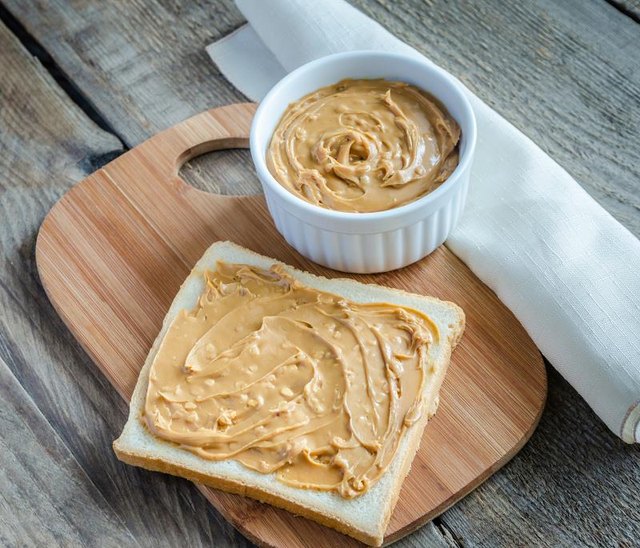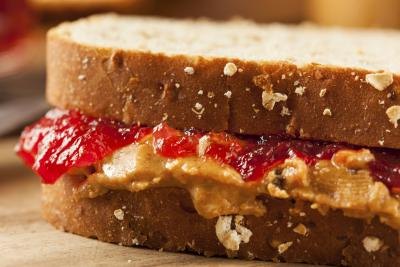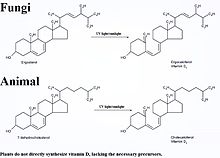Medicinal fungi are those fungi which produce medically significant metabolites or can be induced to produce such metabolites using biotechnology. The range of medically active compounds that have been identified include antibiotics, anti-cancer drugs, cholesterol inhibitors, psychotropic drugs, immunosuppressants and even fungicides. Although initial discoveries centred on simple moulds of the type that cause spoilage of food, later work identified useful compounds across a wide range of fungi.
History
Although fungi products have been used in traditional and folk medicines, probably since pre-history, the ability to identify beneficial properties and then extract the active ingredient started with the discovery of penicillin by Alexander Fleming in 1928. Since that time, many additional antibiotics have been discovered and the potential for fungi to synthesize biologically active molecules useful in a wide range of clinical therapies has been extensively exploited.
Pharmacological research has now isolated antifungal, antiviral, and antiprotozoan, isolates from fungi.
The fungus with probably the longest record of medicinal use, Ganoderma lucidum, is known in Chinese as líng zhī ("spirit plant"), and in Japanese as mannentake ("10,000-year mushroom"). In ancient Japan, Grifola frondosa was worth its weight in silver, although no significant therapeutic benefits have been demonstrated in humans.
Studies have shown another species of Ganoderma, genus, Ganoderma applanatum, contains compounds with anti-tumor and anti-fibrotic properties.
Inonotus obliquus was used in Russia as early as the 16th century, and it featured in Alexandr Solzhenitsyn's1967 novel Cancer Ward.
Lichens have also been used in many folk medicine traditions to treat a wide range of ailments. Research has demonstrated a range of therapeutically significant compounds in a range of lichen species but none are currently believed to be in use in mainstream medicine.
Applications

40x brightfield microscopy of Pestalotia/Pestalotiopsis spores. Note the appendages. Some strains (Pestalotiopsis pauciseta) are known to produce taxol.
Cancer
Paclitaxel is synthesised using Penicillium raistrickii and plant cell fermentation. Fungi can synthesize other mitotic inhibitors including vinblastine, vincristine, podophyllotoxin, griseofulvin, aurantiamine, oxaline and neoxaline.
11,11'-Dideoxyverticillin A, an isolate of marine Penicillium, was used to create dozens of semi-synthetic anticancer compounds. 11,11'-Dideoxyverticillin A, andrastin A, barceloneic acid A and barceloneic acid B, are farnesyl transferase inhibitors that can be made by Penicillium. 3-O-Methylfunicone, anicequol, duclauxin and rubratoxin B, are anticancer/cytotoxic metabolites of Penicillium.
Penicillium is a potential source of the leukemia medicine asparaginase.
Some countries have approved Beta-glucan fungal extracts lentinan, polysaccharide-K, and polysaccharide peptide as immunologic adjuvants. There is some evidence of this use having effectiveness in prolonging and improving the quality of life for patients with certain cancers, although the Memorial Sloan-Kettering Cancer Center observes that "well designed, large scale studies are needed to establish the role of lentinan as a useful adjunct to cancer treatment"..
According to Cancer Research UK, "there is currently no evidence that any type of mushroom or mushroom extract can prevent or cure cancer". Fungal metabolites such as ergosterol, clavilactones, and triterpenoids are efficient Cdk inhibitors that lead to G1/S or G2/M arrest of cancer cells. Other metabolites, such as panepoxydone, are inhibitors of NF-kB. Fucose and mannose fragments of fungal cell wall are antagonists of VEGF-receptors
Antibacterial Agents (antibiotics)
Alexander Fleming led the way to the beta-lactam antibiotics with the Penicillium mold and penicillin. Subsequent discoveries included alamethicin, aphidicolin, brefeldin A, Cephalosporin, cerulenin, citromycin, eupenifeldin, fumagillin, fusafungine, fusidic acid, itaconic acid, MT81, nigrosporin B, usnic acid, verrucarin A, vermiculine and many others.
Antibiotics retapamulin, tiamulin and valnemulin are derivatives of the fungal metabolite pleuromutilin. Plectasin, austrocortilutein, austrocortirubin, coprinol, oudemansin A, strobilurin, illudin, pterulone, and sparassol are antibiotics isolated from basidiomycete Species.
Cholesterol Biosynthesis Inhibitors
Statins are an important class of cholesterol-lowering drugs; the first generation of statins were derived from fungi.
The Pravastatin precursor mevastatin can be extracted from Penicillium. Lovastatin, the first commercial statin, was extracted from a fermentation broth of Aspergillus terreus. Industrial production is now capable of producing 70 mg lovastatin per kilogram of substrate. The red yeast rice, fungus, Monascus purpureus, can synthesize lovastatin, mevastatin, and the simvastatin precursor monacolin J. Zaragozic acids were isolated from ascomycota. Nicotinamide riboside, a cholesterol biosynthesis inhibitor, is made by Saccharomyces cerevisiae.
Other compounds include Simvastatin, a semi-synthetic derivative of Lovastatin.
Antifungals
Griseofulvin, caspofungin, strobilurin, azoxystrobin, micafungin, and echinocandins, are all extracted from fungi. Anidulafungin is a derivative of an Aspergillus metabolite.

The red yeast rice, fungus, Monascus purpureus, can synthesize three statins.
ImmunosuppressantsEdit
Ciclosporin, was discovered in Tolypocladium inflatum. Bredinin was discovered in Eupenicillium brefeldianum. Mycophenolic acid was discovered in Penicillium stoloniferum. Thermophilic fungi were the source of the fingolimod precursor myriocin. Aspergillussynthesizes immunosuppressants gliotoxin and endocrocin. Subglutinols are immunosuppressants isolated from Fusarium subglutina Other compounds include mizoribine.
Malaria
Codinaeopsin, efrapeptins, zervamicins, and antiamoebin, are made by fungi.
Many fungal isolates act as DPP-4 inhibitors, alpha-glucosidase inhibitors, and alpha amylase inhibitors in vitro. Ternatin, is a fungal isolate that suppresses hyperglycemia. Aspergillusol A is an alpha-glucosidase inhibitor made by Aspergillus. Sclerotiorin is an aldose reductase inhibitor made by Penicillium.
Psychotropic Effects
A number of fungi have well documented psychotropic effects, some of them severe and associated with sometimes acute and life-threatening side-effects. Well known amongst these is Amanita muscaria, the fly agaric. More widely used informally are a range of fungi collectively known as "magic mushrooms", which contain psilocybin and psilocin.
The history of bread-making is also peppered with references to deadly ergotism caused by ergot, most commonly Claviceps purpurea, a parasite of cereal crops. A number of therapeutically useful drugs have subsequently been extracted from ergot including ergotamine, pergolide and cabergoline.
Psychotropic compounds created from ergot alkaloids also include dihydroergotamine, methysergide, methylergometrine, hydergine, nicergoline, lisuride, bromocriptine, cabergoline, pergolide. Polyozellus multiplex synthesizes prolyl endopeptidase inhibitors polyozellin, thelephoric acid, kynapcins. Neurotrophic fungal isolates include L-theanine, tricholomalides, scabronines, termitomycesphins. Many fungi synthesize the partial, non-selective, serotonin receptor agonist/analog psilocin.
A number of other fungal species, including species of Aspergillus and Penicillium, have been induced to produce ergot alkaloids.
The photochemistry of Vitamin D biosynthes
Fungi are one source of vitamin D. Fungi can synthesize vitamins D2 (ergocalciferol), D4 (22-dihydroergocalciferol), and D1 (Lumisterol+D2).
Aspergillus niger is used to produce recombinant phytase, an enzyme added to animal feeds to improve absorption of phosphorus.
Edible species with medically significant metabolites
Many edible species have been shown to produce medically significant metabolites. However eating fungi with such properties is most unlikely to result in any medically beneficial effect. Most compounds of interest when used for medical purposes are synthesized on an industrial scale and are packaged and administered in ways that maximise the potential benefit.
Those fungi listed below have been shown to have significant effect as evidenced by human clinical trials published in peer reviewed papers and quoted in secondary sources.
Agaricus subrufescens (Agaricus blazei/brasiliensis, almond mushroom) is a fungus associated with Brazil and Japan. Research and small clinical studies demonstrated A. subrufescens extracts have antihyperglycemic and anticancer activities. Brefeldin A and blazein were isolated from A. subrufescens.
Boletus badius has been shown to synthesize theanine which is claimed to have mild psychoactive properties.
Cordyceps sinensis is an entomopathogenic fungi collected on the Tibetan Plateau. The immunosuppressant ciclosporin was originally isolated from Cordyceps subsessilis. The adenosine analog cordycepin was originally isolated from Cordyceps. Other Cordycepsisolates include, cordymin, cordycepsidone, and cordyheptapeptide. CS-4 is commercially sold as C. sinensis, but Cs-4 has recently been confirmed to be a different species from the Cordyceps species used in traditional Chinese medicine. CS-4 is properly known as Paecilomyces hepiali. Hirsutella sinensis is the accepted asexual form of C. sinensis.
Lentinula edodes (Shiitake) has been used as a source of Lentinan, AHCC, and eritadenine. In 1985 Japan approved lentinan as an adjuvant for gastric cancer. Studies there indicate prolonged survival and improved quality of life when gastric cancer patients with unresectable or recurrent diseases are treated with lentinan in combination with other chemotherapies.
Morchella esculenta (Morel) contains the amino acid, cis-3-amino-L-proline.
Ustilago maydis (Mexican truffle, huitlacoche, corn fungus) synthesises ustilagine and ustilagic acid.
Ganoderma lucidum (Ling zhi, mannentake, reishi) has a long record of medicinal use. It contains p-hydroxybenzoic acid, cinnamic acid, and lanostane-type triterpenoids such as ganoderic acids.
Hydnellum peckii has yielded atromentin, an anticoagulant isolated from the mycorrhiza.
Schizophyllum commune (Split gill) has yielded schizophyllan (SPG, sizofiran, sonifilan) which has been researched clinically for anticancer activity. Hydrophobins were originally isolated from S. commune. A chemically analogous polysaccharide, scleroglucan, is an isolate of Sclerotium rolfsii.
Trametes versicolor (Coriolus versicolor, yun zhi, kawaratake, turkey tail) have produced protein-bound polysaccharides PSK and PSP (polysaccharopeptide) from different mycelia strains. In Japan, PSK is a gastric cancer adjuvant. Japan began using PSK in 1977, while China began using PSP in 1987.
Yeasts
Saccharomyces is used industrially to produce the amino acid lysine, as well as recombinant proteins insulin and Hepatitis B surface antigen. Transgenic yeast are used to produce artemisinin, as well as a number of insulin analogs. Candida is used industrially to produce vitamins ascorbic acid and riboflavin. Pichia is used to produce the amino acid tryptophan and the vitamin pyridoxine. Rhodotorula is used to produce the amino acid phenylalanine. Moniliella is used industrially to produce the sugar alcohol erythritol.
References
- ^ Engler M, Anke T, Sterner O (1998). "Production of antibiotics by Collybia nivalis, Omphalotus olearis, a Favolaschia and a Pterula species on natural substrates.". Z Naturforsch C 53 (5-6): 318–24. PMID 9705612.
- ^ "Maitake Mushroom". Complementary and Alternative Medicine : Diet and Nutrition. American Cancer Society. 2008. Retrieved 2011-03-08.
- ^ Zheng, Weifa; Miao, Kangjie; Liu, Yubing; Zhao, Yanxia; Zhang, Meimei; Pan, Shenyuan; Dai, Yucheng (2010). "Chemical diversity of biologically active metabolites in the sclerotia of Inonotus obliquus and submerged culture strategies for up-regulating their production". Applied Microbiology and Biotechnology 87 (4): 1237–54. doi:10.1007/s00253-010-2682-4. PMID 20532760.
- ^ a b S Malhotra, R Subban, A Singh (2007). "Lichens – Role in Traditional Medicine and Drug Discovery". The Internet Journal of Alternative Medicine 5 (2).
- ^ Bemani E, Ghanati F, Rezaei A, Jamshidi M (2013). "Effect of phenylalanine on Taxol production and antioxidant activity of extracts of suspension-cultured hazel (Corylus avellana L.) cells.". J Nat Med 67 (3): 446–51. doi:10.1007/s11418-012-0696-1. PMID 22847380.
- ^ Gangadevi V, Murugan M, Muthumary J (2008). "Taxol determination from Pestalotiopsis pauciseta, a fungal endophyte of a medicinal plant.". Sheng Wu Gong Cheng Xue Bao 24(8): 1433–8. doi:10.1016/s1872-2075(08)60065-5, PMID 18998547.
- ^ (PDF)http://web.archive.org/web/20141226222055/http://globalsciencebooks.info/JournalsSup/images/0806/IJBPS_2(1)1-23o.pdf. Archived from the original (PDF) on December 26, 2014. Retrieved August 17, 2014.
- ^ "Research update: Chemists find help from nature in fighting cancer - MIT News Office". Web.mit.edu. 2013-02-27. Retrieved 2013-12-17.
- ^ Overy DP, Larsen TO, Dalsgaard PW, Frydenvang K, Phipps R, Munro MH, et al. (2005). "Andrastin A and barceloneic acid metabolites, protein farnesyl transferase inhibitors from Penicillium albocoremium: chemotaxonomic significance and pathological implications... Mycol Res 109 (Pt 11): 1243–9. doi:10.1017/S0953756205003734 PMID 16279417.
- ^ Shrivastava A, Khan AA, Shrivastav A, Jain SK, Singhal PK (2012). "Kinetic studies of L-asparaginase from Penicillium digitatum.". Prep Biochem Biotechnol 42 (6): 574–81. doi: 10.1080/10826068.2012.672943. PMID 23030468.
- ^ a b Ina, K; Kataoka, T; Ando, T (2013). "The use of lentinan for treating gastric cancer". Anti-cancer agents in medicinal chemistry 13 (5): 681–8. doi:10.2174/1871520611313050002. PMC 3664515 PMID 23092289.
- ^ "Lentinan". Memorial Sloan-Kettering Cancer Center. 27 February 2013. Retrieved August 2013.
External Links
- Antitumor Extrolites Produced by Penicillium Species
- Endophytic fungi for producing bioactive compounds originally from their host plants
- Bioprospecting for Microbial Endophytes and Their Natural Products - 2003
- Cancer Research UK Medicinal Mushrooms: Their therapeutic properties and current medical usage with special emphasis on cancer treatments.
- Memorial Sloan-Kettering Agaricus subrufescens, Phellinus linteus, Ganoderma lucidum, Trametes versicolor and PSK, Grifola frondosa, Inonotus obliquus, Pleurotus ostreatus, Cordyceps, Shiitake, Lentinan, AHCC.
- American Cancer Society Trametes versicolor and PSK, Grifola frondosa, Shiitake.
- National Cancer Institute Shiitake, Lentinan, Cordycepin.
- Wikipedia











